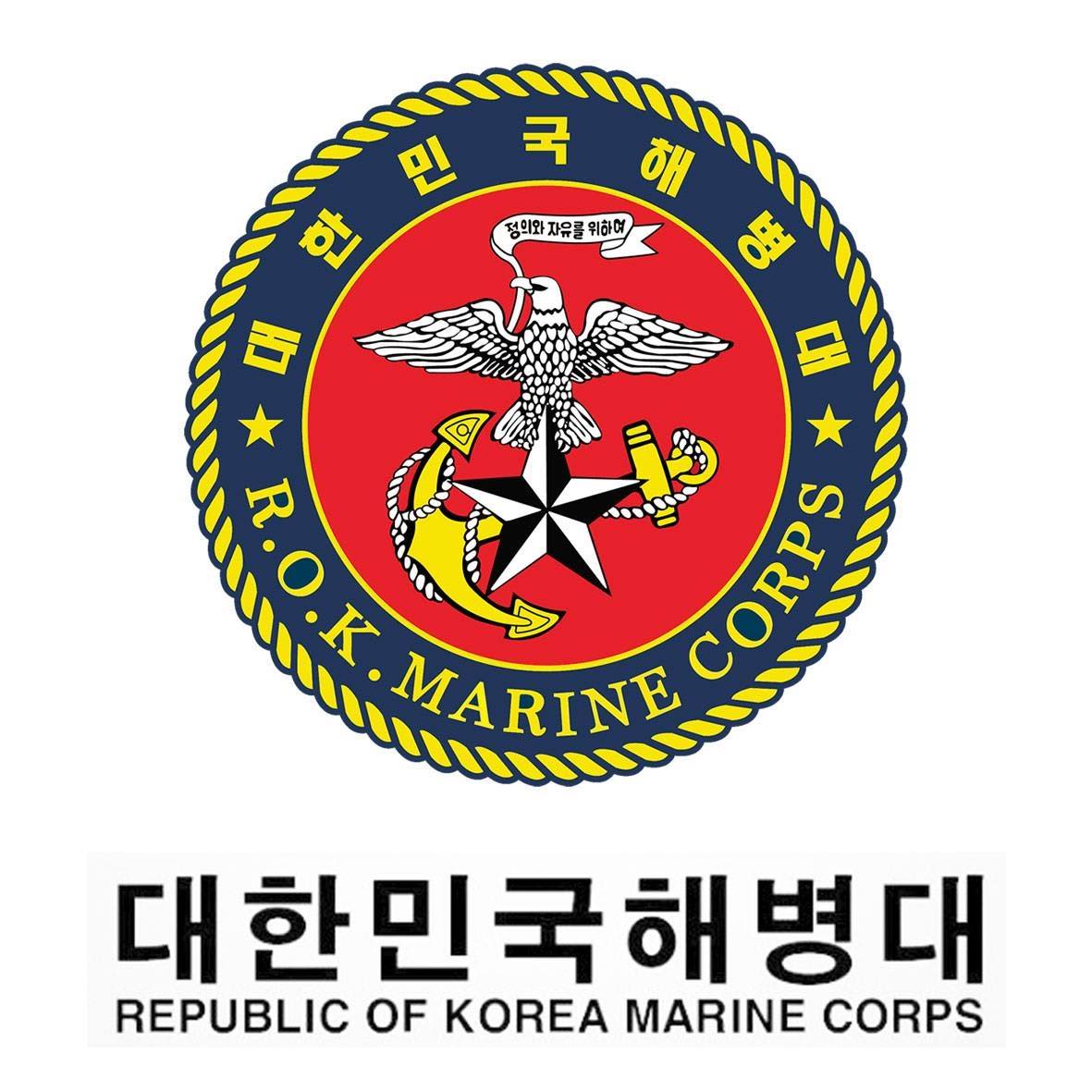Marine Corps

By some reconings, the ROKMC is the second largest marine corps in the world. The marine corps remains a small force [relative to the Army] primarily dedicated to protecting the nation's islands. The marine corps, with 25,000 personnel, is organized into two divisions and one brigade under the Marine Corps Command. Although part of the navy, marine units often operate under army control. To execute amphibious operations, it possesses a range of amphibious equipment such as amphibious vehicles, as well as its own means of fire support.
The ROK Marine Corps is a special force taking charge of landing operations, which is accomplished by the navy with landing parties aboard landing crafts, fleets and aircraft. They attack the enemy's seashore from the sea or ground landing sites. The ROK Marines has the ability to accomplish missions which include ground battles, special fighting scenarios, facility protection and security services

. Whenever there's a call for duty, they are as responsive as 911 rescue.
The ROK Marine Corps was established April 15, 1949 with an initial strength of 380 men. They won battles in both the Korean and Vietnam wars with invincibility as they were never defeated on the battlefield. As a result, they gained a fighting reputation with nicknames like; "Ghost Buster", "The Invincible ROK Marines" and "The Legendary ROK Marines".

The Marine Corps Headquarters is organized into two divisions and one brigade. For amphibious landing operations, the marines possess a wide range of landing equipment, such as amphibious tanks and their own fire support.
The principal influence on ROKMC acquisition programs is their wartime role as part of the Combined Marine Forces Command. Acquisition plans are tied to ROK Army procurement and focus on increasing tactical mobility, firepower, and command and control.
Until the mid-1990s, the ROKMC fleet of Amphibious Vehicles consisted of sixty-one Landing Vehicles Tracked (LVT) and forty-two AAV7A1. In the early 1980s all Amtracs in USMC service were modified to LVTP7A1 standard, so the original LVTP7 variant was only used for about ten years. This variant however remained for many more years in service of naval infantries of many other countries, like South Korea. In an effort to replace the LVTs, the ROKMC undertook a fifty-seven vehicle, three-year AAV7A1 co-production effort. The ROKMC then modified that contract and produced an additional sixty-seven additional AAV7A1 vehicles. Since 1998, South Korea had deployed 124 new amphibious landing vehicles to bolster its defenses against North Korea as well as replace its aging Marine Corps fleet.
In July 2006 it was reported that South Korea would spend 149 billion won ($157 million) over the following five years [through 2011] to manufacture additional amphibious assault vehicles in a partnership with BAE Systems. But the Defense Acquisition Program Administration (DAPA) declined to make public the number of vehicles to be produced in the third-phase project by 2010, citing the need to protect military information. "Its design is basically the same as U.S.-made amphibious assault vehicles (AAV7) except for Korean machine guns, communication equipment and vehicle parts," a DAPA official said. US troops used the AAV7s to charge into Baghdad in the Iraq war. The AAV7A1 is currently in service with a number of marine units around the world including the US Marine Corps, Royal Thai Marines, Spanish Marines, Republic of Korea Marines and the Italian Lagunari and San Marco regiments.
A major naval evolution during Foal Eagle 2000, an annual combined U.S. and Republic of Korea (ROK) exercise, was an amphibious assault launched by U.S. and ROK Marines from U.S. Navy ships belonging to 7th Fleet's permanently forward-deployed Amphibious Ready Group (ARG) based in Japan.
As of 2008 the Marine Corps had no aircraft of its own, relying on air support from the Army and Navy. The service plans to create an aviation brigade with transport and attack helicopters by 2015. To strengthen its intelligence-gathering and surveillance capabilities, the service also is considering deploying unmanned aerial surveillance vehicles by 2014, they added.
'해병대 자료' 카테고리의 다른 글
| 미해병대 전우회 홈페이지 (0) | 2022.12.22 |
|---|---|
| 영국 해병대 홈페이지 (0) | 2022.12.22 |
| 한국 해군의 LPX 독도급 강습상륙함 (0) | 2022.12.21 |
| 영국해병대 작전수행 개념 및 발전방향 (0) | 2022.12.21 |
| 해병대 비화 - U.P.I 기자와의 대담 (0) | 2022.12.20 |

